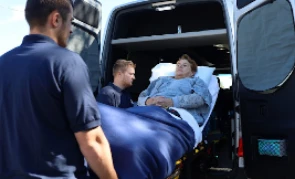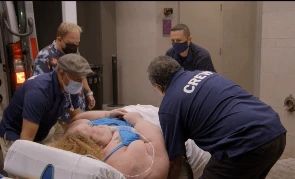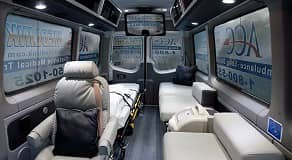Elite medical transport companies have experience in conveying patients to and from the hospital, including those on wheelchairs. They take a lot of safety measures to ensure that every patient reaches medical facilities without hassles.
When leaving your loved one to the care of a Non-Emergency Medical Transport (NEMT) professional, you might get scared that the patient will get into trouble along the way. The fear is even worse for patients using wheelchairs.
Luckily, elite medical transport firms prioritize safety when transporting their patients. They have specialized devices for lifting the wheelchair into and out of the vehicles.
Before starting a trip, the employee fixes the wheelchair to the vehicle’s interior using lock brakes. In addition, patients should fasten their seatbelts throughout the journey to avoid injury during transfer.
Patients on wheelchairs easily get injured during the transfer process. However, the NEMT provider’s role is to give passengers an optimum level of comfort and safety during the journey.
Furthermore, elite medical transport providers install modern tools in their vehicles to keep passengers safe. After getting the wheelchair into a NEMT vehicle, an employee locks the wheelchair in and secures it to the vehicle. The wheelchair must be locked when the patient is sitting uprightly in a wheelchair.
Virtually every state in the US has passed a traffic law to ensure passengers and drivers fasten their seatbelts while driving. The same rule applies to patients in wheelchairs. The passenger fastens the lap and shoulder belt around the shoulder, chest, and pelvis before the trip starts.
The primary objective of putting on seatbelts is to avoid potential hazards. However, some wheelchairs use seatbelts that have not undergone a crash test. For this reason, many elite medical transport services use WC-compliant seatbelts for safety purposes.
Wheelchairs are fixed to the vehicles using a four-point tie-down system to keep them in position. Mounting brackets to the wheelchair’s bottom restricts movements, thus enhancing safety. Patronizing an elite medical transport company ensures that patients on wheelchairs are safe from potential hazards.
According to the Americans with Disabilities Act, no person should suffer prejudice on account of their disability with regards to employment, public services, and accommodation. Patients who rely heavily on wheelchairs are also allowed to travel on airplanes. However, they need assistance getting to and from their seats on an aircraft.
Airline companies often make available aisle chairs – small wheelchairs for conveying disabled passengers from their wheelchairs to an aircraft seat. Elite medical transport firms provide employees to help you deplane and enplane safely using an aisle chair. An immobile individual can also access the toilet with this device.
Patients on wheelchairs are at increased risk of sustaining injuries when they are being transported. Since safety is a priority, elite medical transport ensures that adequate measures are put in place to guarantee that patients enjoy their trips to and from the hospital both safely and conveniently.

When choosing a medical transport service provider, you must ensure to choose one that not only focuses on getting you to your destination, but also prioritizes using the safest, most conducive, and most efficient sets of vehicle fleets and equipment to do the job.

ACC Medlink appeared on the TLC television network reality show “1000 LB Sisters” to transport one of the cast members from Ohio to a doctor in Kentucky. ACC Medlink, four of its employees, and the journey they took with Tammy Slaton were featured in episode 6 of season 4.

ACC Medlink is proud to announce the addition of a new line of elite medical sprinter vans to our long distance medical transport fleet. This addition will allow ACC Medlink to continue to provide superior service and outstanding care for those in need of medical transport out of state...
